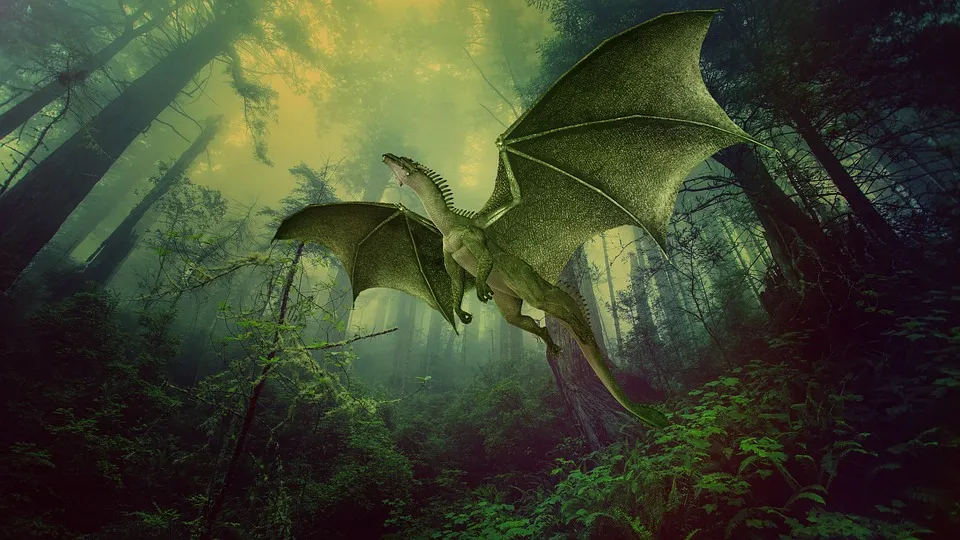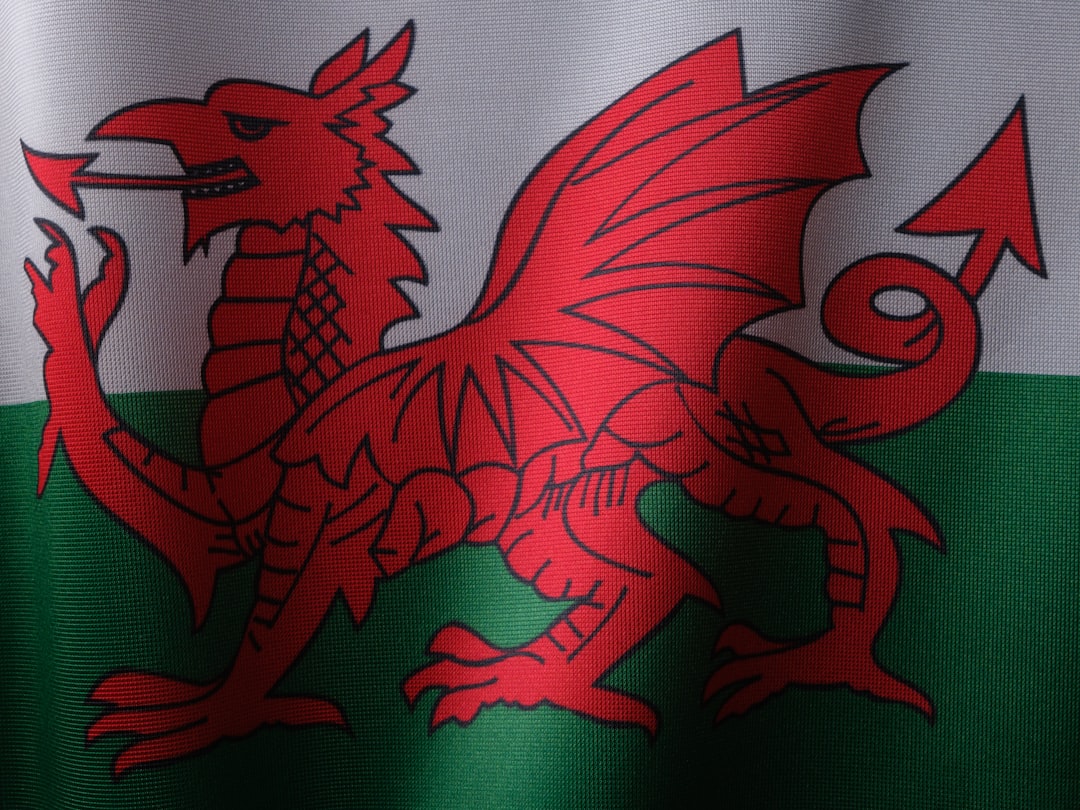Since ancient times, dragons have been associated with power and wisdom. From mythology to popular literature, dragons have been depicted in various forms, sometimes benevolent and other times malevolent. But what about in the Bible? What does it say about these mythical creatures? This post explores the evolution of dragon mythology in Christianity, from its early origins to its modern interpretations, and delves into the symbolism and significance of dragons in the biblical context. Read on to learn more.
Dragons in Mythology and Folklore

Dragons have been a fixture in mythology and folklore for centuries. They are typically depicted as fierce, fire-breathing creatures with massive wings and sharp claws. In many cultures around the world, dragons are revered as symbols of strength and wisdom. In others, they are feared as monsters or demons.
The origins of dragon mythology are unclear, but many ancient cultures have myths and legends featuring these creatures. In China, the dragon is considered a symbol of good fortune and strength. In European folklore, dragons were often hoarders of treasure and were slain by heroic knights.

One of the most famous dragon legends comes from ancient Greece. The story of the Hydra tells of a multi-headed dragon that was vanquished by the hero Heracles. Another famous dragon from mythology is the Norse creature Jormungandr, a sea serpent that encircles the entire world.
Many of these stories and legends have been passed down through the generations, inspiring writers and artists throughout history. Today, dragons are a favorite subject in fantasy literature and art.
Here are some popular dragons from mythology and folklore:
- Chinese Dragon – revered in Chinese culture as a symbol of power and good fortune
- Hydra – multi-headed dragon from Greek mythology
- Jormungandr – sea serpent from Norse mythology
- Leviathan – sea monster from the Bible
- Behemoth – mentioned in the Book of Job as a massive and powerful creature
- Fire Dragon – often depicted in medieval European art as a fierce, fire-breathing dragon
- Saint George and the Dragon – a famous legend from medieval Europe about a Christian knight who slays a dragon
Dragons in mythology and folklore have influenced modern culture in many ways. From the fantasy genre in literature and film to the use of dragon imagery in marketing and advertising, these mythical creatures continue to captivate our imaginations.
Next, we’ll explore the role of dragons in ancient literature.
Dragons in Ancient Literature
Dragons have always been seen as mythical creatures, but their presence in ancient literature solidified their place in mythology and folklore. Ancient civilizations from all around the world have depicted dragons in their art and literature. The dragon is often portrayed as a powerful and fierce creature, representing strength and danger.
One of the earliest examples of dragons in literature comes from Ancient Greece. The dragon-like serpent called Python was slain by the god Apollo at Delphi. The legend of Python represents the triumph of culture over savagery, with Apollo being seen as the representative of Greek civilization and Python as a symbol of the chaotic forces that need to be controlled.
Dragons are also prominently featured in the mythology of China. The Chinese dragon is often depicted as a wise and benevolent creature, associated with water and the heavens. It is seen as the symbol of imperial power and good fortune. This depiction of dragons in Chinese mythology is different from the Western understanding of the creature as a fierce beast capable of destruction.
In Norse Mythology, the dragon is depicted as a powerful and terrifying creature. The myth of the dragon Fafnir tells the story of a mighty dragon slain by Sigurd, the hero of the Volsunga saga. The story represents the dangers of greed, with Fafnir becoming a dragon after he kills his own father for gold. The greed of Fafnir ultimately led to his downfall.

The presence of dragons in ancient literature speaks to the deep-seated fascination that humans have with fantastical creatures. The symbolism of dragons in ancient cultures is complex and varied, representing both good and evil, as well as a mix of both. Understanding the role that dragons played in ancient literature provides a foundation for their depiction in the Bible and adds to our appreciation of the mythical beasts.
In the next section, we will explore the biblical accounts of dragons and their significance in Christianity.
Dragons in the Bible
You may be surprised to learn that dragons are mentioned multiple times in the Bible, often referred to as “serpents” or “beasts.” In fact, the word “dragon” appears 21 times in the King James Version of the Bible.
One of the most famous references to a dragon in the Bible is in the book of Revelation. Chapter 12 describes a great red dragon with seven heads and ten horns, symbolizing the devil or Satan. This dragon is said to have “swept a third of the stars out of the sky and flung them to the earth” (Revelation 12:4).
However, not all dragons in the Bible are evil. In the book of Job, Behemoth and Leviathan are described as powerful beasts of the earth and sea, respectively. Some interpret these creatures to be mythical, while others believe they may have been real animals, such as a hippopotamus or crocodile.
Dragons are also referenced in the Old Testament, with verses such as Psalm 74:13 calling upon God to “crush the heads of Leviathan” and Isaiah 27:1 describing how God will punish “the dragon that lives in the sea.”
« Understanding the Basics of Postmillennialism and Eschatology
Understanding Holy Convocation: A Gathering of Faith, Tradition, and Community »
But what do these references to dragons in the Bible truly mean? Some scholars believe that dragons, like many other mythical creatures in the Bible, are symbolic of powerful forces in the world. They may represent chaos, destruction, or even the power of God.
Regardless of their meaning, it is clear that dragons have played a significant role in Christian lore and mythology. From the medieval period to modern times, dragons have been depicted in art and literature in countless ways, sometimes seen as a symbol of evil and sometimes as a symbol of strength and courage.
Next up, we will explore the symbolism of dragons in Christianity, including their connections to fire and the sea. So stay tuned!
- Dragons are mentioned multiple times in the Bible as “serpents” or “beasts.”
- The great red dragon in the book of Revelation is a symbol of the devil or Satan.
- Behemoth and Leviathan in the book of Job may have been real animals or mythical creatures.
- Dragons in the Bible may represent powerful forces in the world and the power of God.
- Dragons have had a significant role in Christian lore and mythology throughout history.
Symbolism of Dragons in Christianity
Dragons hold a special place in mythology and folklore. They exist in the culture of many societies, and Christianity is no exception. Even though dragons do not appear frequently in the Bible, they do carry specific symbolic significance for Christians. Let’s explore the symbolism of dragons in Christianity.

In Christianity, dragons often represent Satan or the devil. The serpent in the Garden of Eden is believed to be the precursor to the dragon symbol in Christianity. The Bible describes the devil as a fierce dragon in the book of Revelations, with seven heads and ten horns. The devil’s power and cruelty are symbolized by the dragon, whose image is employed as a warning against evil and its temptations.
Dragon symbolism in Christianity also carries aspects of redemption and transformation. The dragon is a motif that represents the journey of believers from darkness to light. Just as the dragon was transformed in medieval legends and stories, Christians are also transformed through their faith and salvation. Dragons are often used as a metaphor for the journey of the self from weakness to strength and the transition from one phase of life to another.
In medieval art, dragons were depicted in battles, with heroes vanquishing them. This symbolized the conquest of evil and the victory of good over darkness. This narrative is often seen in paintings of the Archangel Michael, who is depicted defeating a dragon. The metaphorical battle against evil ultimately leads to enlightenment and spiritual victory.
The dragon is a powerful symbol of the dangers of sin and evil, and it takes courage and conviction to overcome these obstacles. In Christian symbolism, the dragon represents the ultimate test of faith and perseverance, where the reward is salvation and spiritual growth.
In conclusion, while not extensively explored in Christian literature, dragons represent a symbolic force in Christian theology. They are used as a tool to represent both the dangers of sin and the journey of redemption, transformation, and ultimate triumph. Understanding these symbolic representations can help Christians in their spiritual journey.

Dragons in Medieval Art and Literature
As the popularity of dragon mythology grew, medieval art and literature began to depict dragons in various ways. These creatures were often seen as a symbol of power and mystery, and artists used them to create stunning visual works.
Here are some examples of how dragons were depicted in medieval art and literature:
-
As a fearsome beast: Dragons were often portrayed as terrifying creatures with sharp teeth and claws. They were seen as a powerful force to be reckoned with, and many medieval stories revolved around heroes battling dragons to save their communities.
-
As a symbol of temptation: In some stories, dragons were used to symbolize temptation and sin. They were often depicted as hoarders of treasure, luring humans to their lairs with promises of riches and wealth.
-
As a protector: In other stories, dragons were seen as protectors of sacred objects or places. They were loyal guardians, fiercely defending their charges from anyone who threatened them.
-
As a mythical creature: Medieval artists also took liberties with their depictions of dragons, creating fantastical and otherworldly beings that were beyond reality.
Overall, dragons played a significant role in medieval art and literature. They were often seen as symbols of power, mystery and danger, and were used to convey important moral lessons to audiences.
So, whether you are exploring mythology and folklore, or seeking to learn more about Christian symbolism, dragons are a fascinating and alluring beast that continue to capture our imaginations today.
The Legacy of Dragon Mythology in Modern Culture

The dragons of mythology and folklore continue to be a popular subject in modern culture. Dragons are often portrayed as fierce beasts, breathing fire and causing destruction in their wake. They are featured in popular movies like The Hobbit and Game of Thrones, as well as in video games, books, and artwork. But few people realize that the iconic dragon of modern culture has its roots in ancient mythology and religious beliefs.
One of the earliest recorded references to dragons can be found in the Epic of Gilgamesh, an ancient Babylonian poem from around 2000 BCE. In this epic, a hero named Gilgamesh slays a dragon-like monster named Humbaba in order to demonstrate his bravery. Many cultures throughout history have similar stories of dragon-slaying heroes, including Greece, China, and Scandinavia.
In medieval Europe, dragons were often seen as symbols of evil and were depicted as the ultimate enemy of good. Many Christian writers of the time used dragons as symbols for Satan and other demonic forces. This portrayal of dragons as evil beasts continued into the Renaissance period, where dragons were often depicted in artwork as only being conquered by virtuous, Christian heroes.
However, not all dragon symbolism in Christianity is negative. In the Bible, the prophet Isaiah speaks of a time when God will defeat the powerful sea monster Leviathan, which is often interpreted as a serpent or dragon. Additionally, the book of Revelation describes a great red dragon that attempts to stop the birth of the Messiah, but is ultimately defeated and cast out of heaven.
Despite their origins in ancient mythology and religious beliefs, dragons have taken on a life of their own in modern culture. Today, dragons are often seen as symbols of power, strength, and independence. They are featured in everything from children’s cartoons to high fantasy novels, and are beloved by many. But even as they continue to capture our imaginations, it’s important to remember the roots of their mythology and the symbolic meanings that they have held throughout history.












